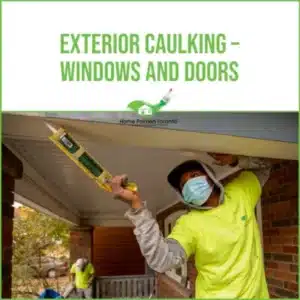
Caulking windows properly not only helps to give them a completely finished look but also helps to seal out any drafts and leaks. It seems like a small task, but it’s really imperative to caulk windows correctly. You’ll notice down the line when you’re looking to sell your home that having all of these crucial details and finishing touches truly makes a difference.
So, that’s exactly why we’re here to give you the ultimate guide to caulking windows. There are all sorts of little tried and true tips to help you along the way. So, let’s dig into caulking windows the right way!
Understanding the Importance of Window Caulking
Caulking windows is a fundamental element of home maintenance but is often overlooked. Though it might seem like a small detail, its impact on comfort, energy efficiency, and long-term
Energy Efficiency and Saving Money
Uncalked windows can let in drafts, allowing outside air to enter and conditioned air to exit your home. This transmission leads to your heating or cooling system working harder to maintain a comfortable temperature, consequently consuming more energy and increasing your utility bills. By properly caulking your windows, you create an airtight seal that reduces energy consumption and helps you save money.
Increased Comfort
Besides energy efficiency, comfort is another significant factor to consider. Uncaulked windows can let in drafts of cold air during the winter and warmer air during the summer, making your space less comfortable. By sealing these gaps, you can prevent unwanted air infiltration and maintain a consistent, comfortable temperature in your home.
Prevention of Water Damage
Without proper caulking, water can seep through the window edges when it rains or snows, causing damage to your sill, wall, and overall framework. Water intrusion can lead to harmful issues like wood rot, structural damage, and even mould growth, affecting your home’s indoor air quality. Caulking creates a barrier, preventing water from penetrating and ensuring your house remains dry and structurally sound.
Intrusion of Pests
Openings around windows can be a gateway for pests to invade your home. From ants and spiders to small rodents, these unwanted guests can slip in through even the tiniest of gaps. Caulking eliminates these passageways, helping to keep pests outside where they belong.
Enhancing Home Aesthetics
Finally, caulking can significantly improve your home’s appearance. Cracking, old, or missing caulk can be quite unsightly. Fresh caulk delivers a neat finish and a cleaner look, enhancing your windows’ aesthetic appeal.
Caulking windows: Checking for leaks
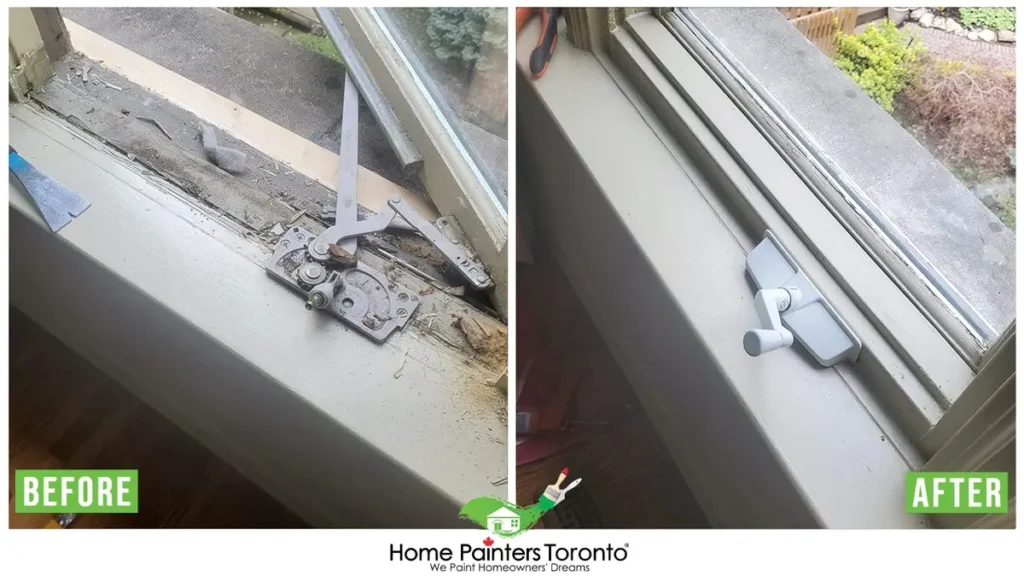
There are a few ways you’re going to want to check for leaks prior to caulking windows. You’re always going to want to examine the window’s corners and window frames. Take a look at the existing caulking and weather stripping. Look for any noticeable gaps or leaks along these surfaces.
You can also check for cracks in the window panes as well. Another little trick is to try and give your windows a firm little shake. If you see that they rattle, it can be a sign that the frames are not secure with caulking. Also, do you see daylight coming in through the window frame along the seam? It’s likely time to do some window caulking.
How to caulk windows: Choosing the right type of caulking
When you head to your local hardware store looking for tools for caulking windows, you’re going to want to pick the right type of caulking. It’s important to choose the right type of caulking depending on where it’s going and what surface you’re looking to seal. For this, we’re discussing window caulking in particular, but you could be caulking the exterior of the window frame or the interior.
For exterior window caulking, you want caulking that will really stand up to the elements and block out water, harsh temperatures and UV rays as well. LePage Quad Exterior Sealant is a great example of a sealant to use for exterior window caulking. If you’re caulking interior windows, you’re going to want a sealant that’s non-toxic and paintable, so an Acrylic Latex Silicone Caulk works best.
Hot tip for choosing the right caulking: be sure to look at colour too! As there is a plethora (white, black, etc.) for caulking windows, you don’t want your sealant to stick out like a sore thumb!
Caulking windows: Get rid of old caulking
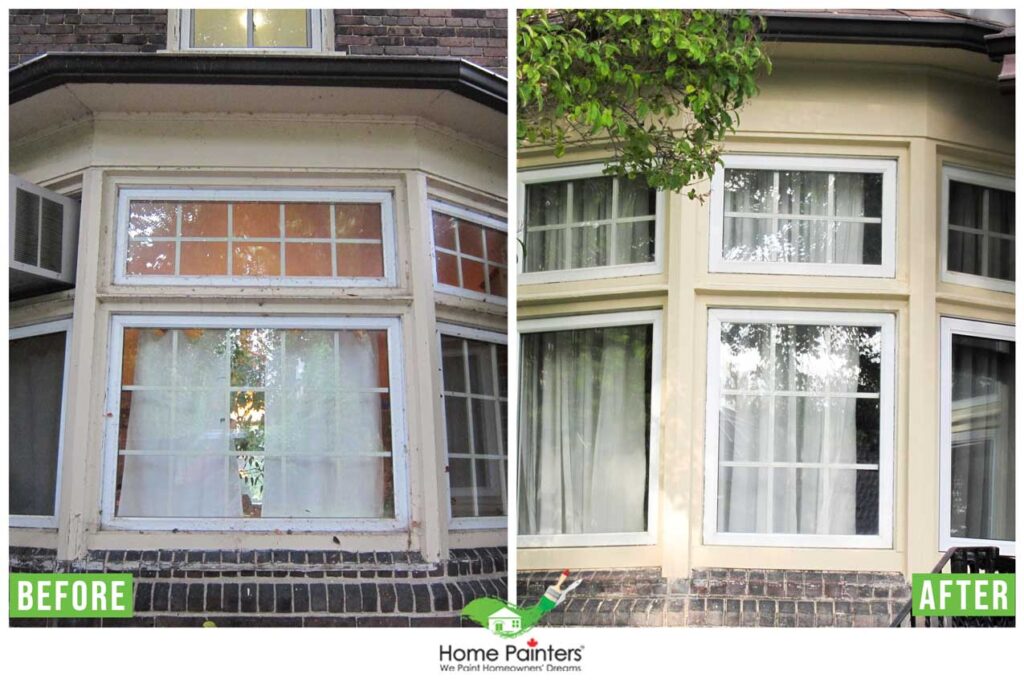
Before you get right in there with your window caulking or sealant, it’s required that you first get rid of old caulking. After all, it’s not properly doing its job, right? It’s pulling away and causing air to get in, so you want to get it out of there. If you do new window caulking over an existing sealant, the new stuff is simply going to do the same thing.
To get rid of old sealant for caulking windows, simply scrape off the caulking with a steel putty knife. Be extra careful here and use a firm and steady hand because you don’t want to do any damage to your windows. If you’re super worried about this part, you could always consult a professional for their window caulking expertise.
Some practical tips for caulking windows
If you’re doing the window caulking yourself, it’s always best to use a caulking gun with a thumb release. This will allow for the pressure on the caulking to stop flowing when you’re done running a bead. Also, it’s always best to use both hands, one using the thumb release gauge and the other on the body of the caulking device. It will ensure the sizing of the bead stays the same and remains steady.
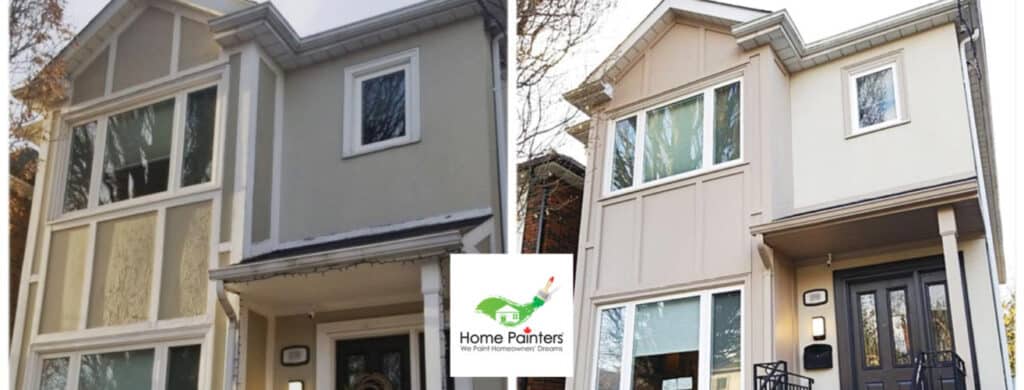
Also, another good tip for caulking windows is to try not to go from end to end. Your thumb on the release is likely to get tired along the way. So, it’s best to caulk from one end to the middle portion then stop and start from the opposite side and meet in the middle as well. When you’re done with your window caulking, you’re going to want to smooth the bead. You can use an applicator or even your wet finger. But to prevent any messy mistakes, just smooth small sections (about six inches) at a time.
Troubleshooting Window Caulking Exterior Issues
Whether you are a DIY enthusiast or a novice homeowner, encountering issues when caulking your windows is quite common. From reappearing gaps to cracking and drying problems, here are some common caulking issues and solutions to help you out.
Reappearing gaps
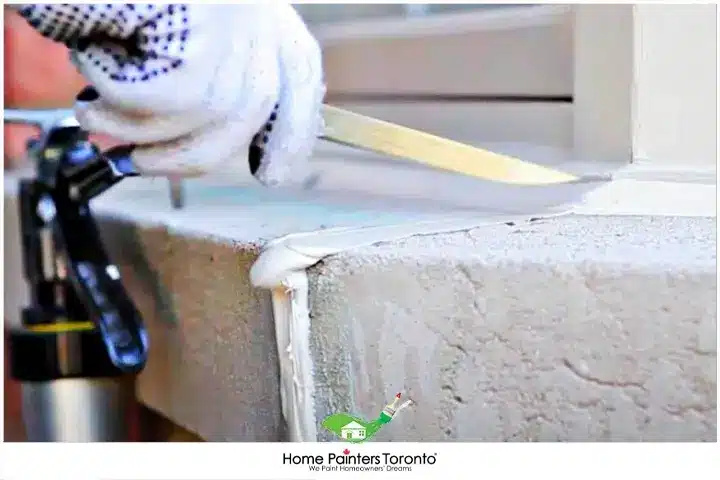
One of the most common problems homeowners face after caulking their windows is the reappearance of gaps. This can be due to the contraction of caulk as it dries or an insufficient amount of caulk applied to the gap in the first place.
Solution: Make sure you apply enough caulk to fill the gap completely, smoothing it out to ensure it reaches all areas. Using a backer rod to fill larger gaps before caulking can also help prevent this issue.
Causing paint to peel off
It’s not uncommon for homeowners to experience paint peeling off around the area where they’ve applied caulk. This can happen if the caulk isn’t adhering correctly to the surface or if the paint is incompatible with the caulk.
Solution: Ensure the surface is clean and dry before applying caulk for better adhesion and pair the right type of caulk with your paint. For instance, use a paintable type of caulk if you plan on painting over it after it dries.
Caulk cracking
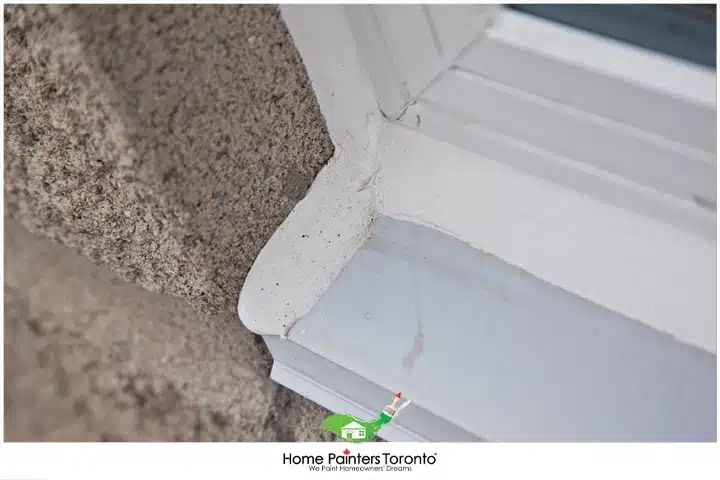
Caulk may sometimes develop cracks over time. This could be because the caulk was applied too thin and stretched over time, or the use of low-quality caulk.
Solution: Applying an adequate amount of caulk and smoothing it properly will help reduce cracking. Always go for high-quality caulking products that offer flexibility and durability.
Caulk not drying
Sometimes, caulk fails to dry or cure properly, leading to a gooey mess. This can happen due to various reasons, like improper preparation of the surface, applying caulk in wet or humid conditions, or even a faulty product.
Solution: Thoroughly clean and dry the surface before caulking. Avoid caulking when the weather is wet or extreme. If the caulk still doesn’t dry, it might be a fair indication that the product is past its use-by date or faulty.
Addressing these common caulking issues can be straightforward if you know what to look for. However, if problems persist, it may be best to seek help from professionals to ensure a long-lasting seal around your windows. Always remember that every sealant job has its own unique challenges, but with the right methods and materials, you can overcome them easily.
More Interesting Blogs Related to
“THE ULTIMATE GUIDE TO CAULKING WINDOWS”
Are you not looking to caulk windows yourself? If the work involved in repairing or exterior painting sounds like it involves too much time and energy to do yourself, have our professional painters come in and do the job right! Call 416.494.9095 or email Brian@HomePaintersToronto.com for a FREE quote or visit our website. And don’t forget to follow us on all our social channels below!




